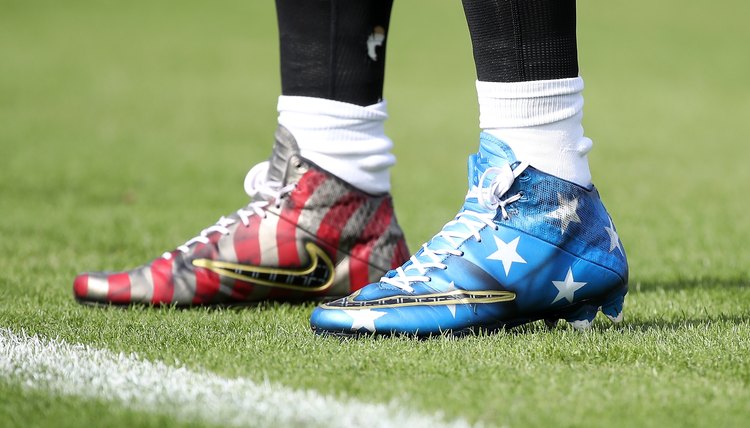History of Football Cleats

Cleats have long given versatility and protection from muscle injuries to football players of all stripes. Their main function is to give a player's footwear better grip on turf, especially in wet or muddy conditions. Advances in the development of the cleat have tracked the game of American football from its inception in the 1860s.
Slow Beginnings
Cleats date back to the 16th century, when England’s Henry the VIII ordered what may have been the first pair of specialized cleats for his "The Great Wardrobe." Cleats first appeared on the opposite side of the Atlantic as footwear for soccer players in the early 19th century.
American football followed with early models, with studs made out of the following:
- Leather
- Metal
- Wood
Using these materials as studs on football cleats led to many injuries.
Along Came Rubber
As football evolved, some innovators saw the need for new and better cleats. In 1925, German brothers Rudolf and Adi Dassler, who would go on to start Puma and Adidas, developed cleats with removable studs. Players were able to drill in their athletic shoes, then take off the studs and walk home. Rubber cleats, once considered too heavy for the game, came along in the 1920s as well thanks to the emergence of vulcanized rubber.
Playing in Mud
While coaching at Oregon Agriculture College, which became Oregon State, football innovator Joseph Pipal developed what came to be known as “mud cleats.” These longer, sharper cleats were designed to improve performance in muddy conditions. They stand alongside the lateral pass as Pipal's contributions to the game of football.

Giorez/iStock/Getty Images
Built for Speed
As cleats continued to evolve, most companies took a lighter is better approach. Adidas' 2011 offering, the 6.9 ounce "5 star" was at the time the lightest football cleat ever invented. Nike topped it two years later with the 5.6 oz Vapor Laser Talon. The VLT was also the first football cleat produced using 3D printing technology.
References
- Advertising Age: Nike Tackles the NFL’s Apparel Contract
- ConnecticutHistory.org: Charles Goodyear and the Vulcanization of Rubber
- HistoryofFootball.net: A Brief History of Football
- Sneaker Report: The Surprising and Unexpected History of Football Cleats
- The Guardian: Who’s the Fat Bloke in the Number Eight Shirt?
Resources
Writer Bio
Joel DeVyldere has worked for various collegiate publications as a reporter, section editor and co-editor. As a writer, he has published works with LIVESTRONG, Chron.com and The Corvallis Advocate. DeVyldere holds a Bachelor of Arts in English from the University of Oregon.
